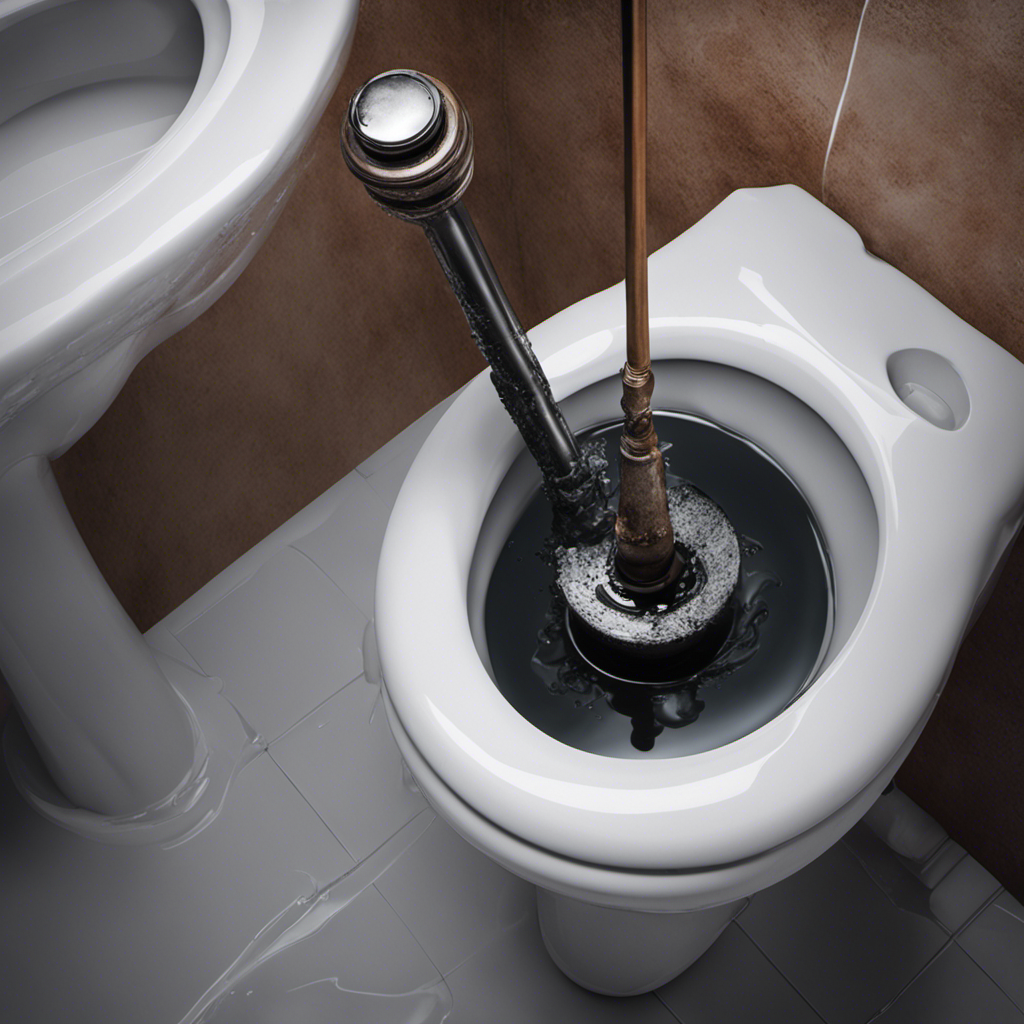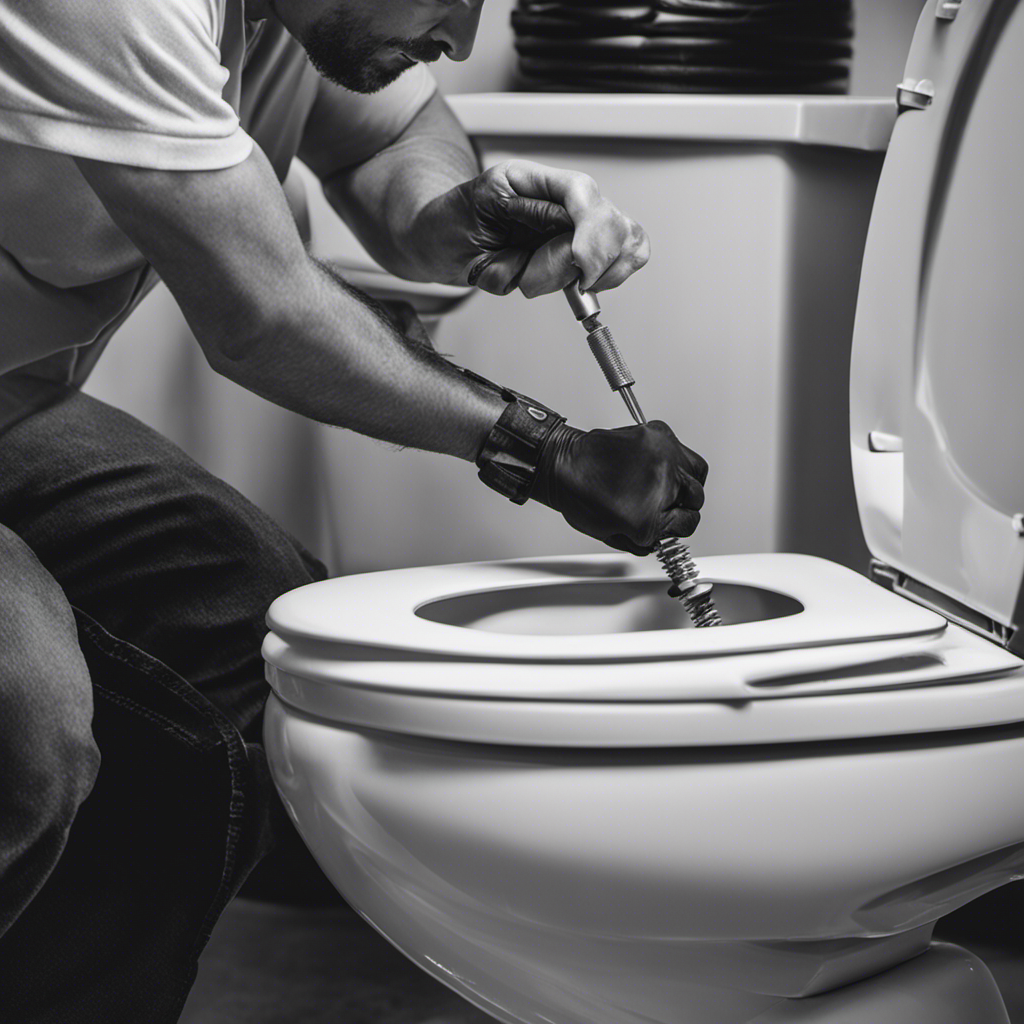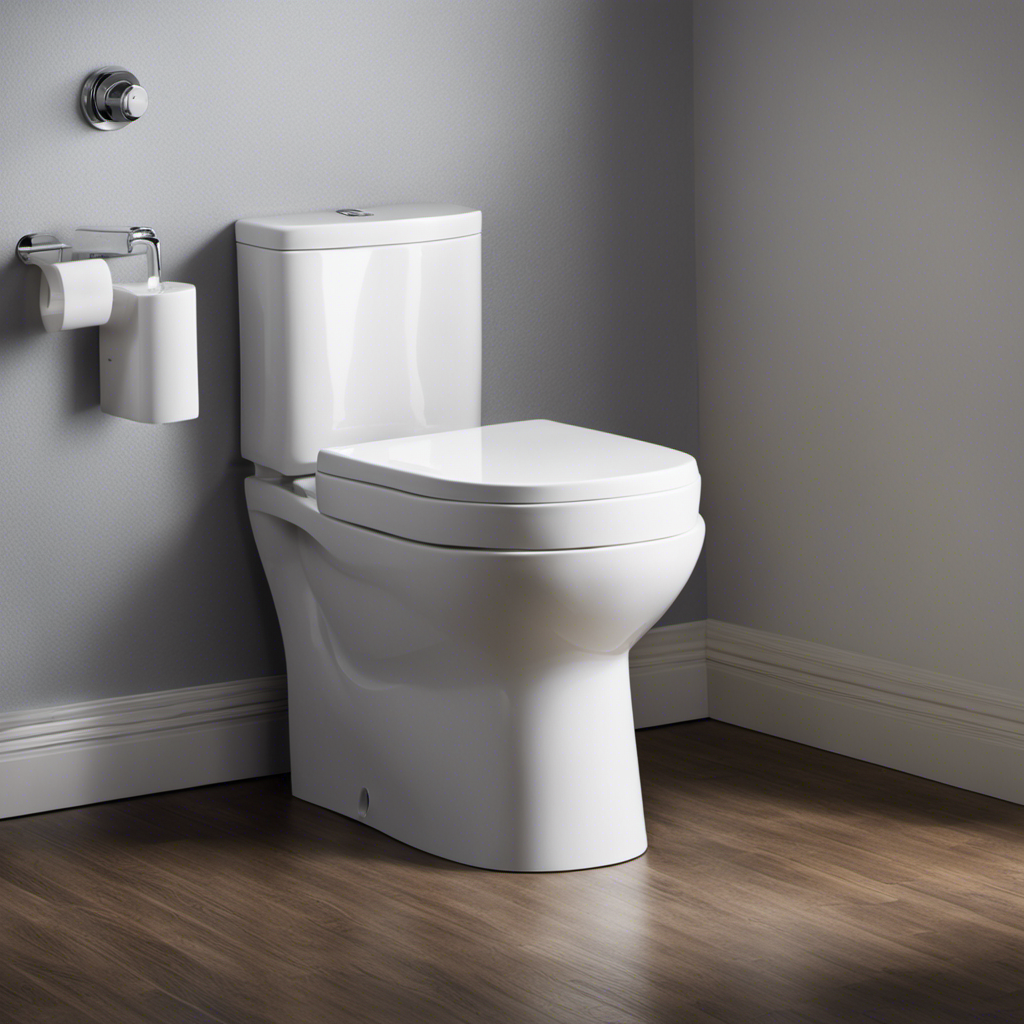Imagine standing in front of a slow draining toilet, feeling frustrated as the water sluggishly swirls around. Well, fear not, because I’ve got you covered with some expert tips on how to fix this annoying problem.
In this article, I will guide you through the common causes of slow draining toilets and provide you with a step-by-step guide to clear those stubborn blockages. With the right tools and techniques, you’ll soon have your toilet flushing efficiently once again.
Let’s dive in!
Key Takeaways
- Common causes of slow draining toilets include toilet paper build-up, foreign objects, and tree root infiltration in the sewer line.
- Repair methods for slow draining toilets include using a plunger or plumbing snake.
- Professional help may be required for severe cases of slow draining toilets.
- Regular maintenance and preventive measures can help avoid serious toilet drain issues.
Common Causes of Slow Draining Toilets
You might be wondering what are the common causes of slow draining toilets.
Slow draining toilets are often caused by toilet drain clogs. These clogs can occur due to various reasons, such as a build-up of toilet paper, foreign objects, or even tree roots infiltrating the sewer line.
When these clogs occur, the flow of water is obstructed, resulting in a slow drainage.
To resolve this issue, there are several toilet drain repair methods that can be employed. One common method is using a plunger to create pressure and dislodge the clog. Another method is using a plumbing snake to physically remove the blockage.
In more severe cases, professional help may be required to identify and repair the underlying cause of the slow draining toilet.
Tools and Materials Needed for Toilet Drain Repair
The tools and materials needed for the repair of a toilet drain include a plunger, a toilet auger, and a bucket. These items are essential for both toilet drain installation and replacement.
Here is a list of the tools and materials needed for this task:
-
Plunger: This handy tool creates pressure to dislodge clogs and restore proper drainage. It is a must-have for any toilet repair.
-
Toilet Auger: Also known as a ‘snake,’ this long, flexible tool is designed to reach deep into the drain pipe and break up stubborn clogs.
-
Bucket: A bucket is necessary to catch any water or debris that may spill during the repair process. It helps to keep the work area clean and prevents further damage.
-
Gloves: A pair of protective gloves will keep your hands clean and shielded from any potentially harmful substances.
Having these tools and materials on hand will ensure a successful toilet drain repair. Remember to follow proper safety precautions and consult a professional if needed.
Step-by-Step Guide to Clearing Toilet Drain Blockages
To effectively clear a blockage in your toilet drain, start by using a plunger to create pressure and dislodge the clog. This is a simple yet effective method that can often solve the problem without the need for additional tools or professional assistance.
However, if the blockage persists, it may be a sign of a more serious issue with your toilet drain. Regular maintenance and clog prevention techniques can help avoid these problems. Look out for signs of a damaged toilet drain, such as slow draining or gurgling sounds when flushing. If you notice these signs, it is important to address the issue promptly to prevent further damage.
Now, let’s explore effective techniques for improving toilet flush efficiency.
Effective Techniques for Improving Toilet Flush Efficiency
If the water in your toilet bowl seems to take longer than usual to disappear after flushing, it could be a sign that your toilet flush efficiency could be improved.
As a professional in toilet flush troubleshooting, I have encountered this issue many times and have found effective techniques to solve it. Here are four steps you can take to improve your toilet flush efficiency:
-
Check the water level: Ensure that the water level in the tank is set at the appropriate level. Adjust it if necessary to optimize the flush.
-
Clean the jets: Over time, mineral deposits and debris can clog the jets, affecting the flush efficiency. Use a small brush to clean them thoroughly.
-
Unclog the drain: A slow draining toilet can be caused by a blockage in the toilet drain. Use a plunger or a drain snake to clear any obstructions.
-
Upgrade the flush mechanism: If all else fails, consider upgrading the flush mechanism to a more efficient one. This can greatly improve the flush performance and save water.
Preventive Maintenance Tips to Avoid Future Toilet Drain Issues
To avoid future issues with your toilet drain, regularly maintain and clean the jets. This will prevent any mineral deposits or debris from clogging them and causing slow draining or blockages.
Proper toilet drain cleaning is essential for preventing these problems. As a DIY enthusiast, you can take certain steps to ensure your toilet drain stays in optimal condition.
Firstly, inspect the toilet jets for any signs of buildup or blockages. Use a brush or a toothbrush to gently scrub away any debris.
Additionally, consider using a vinegar solution to dissolve mineral deposits that may accumulate over time. Flush the toilet several times after cleaning to ensure proper drainage.
Conclusion
In conclusion, fixing a slow draining toilet is like unclogging the flow of a river after a heavy rainstorm. With the right tools and techniques, you can ensure a smooth and efficient flush every time.
By understanding the common causes of toilet drain blockages and following the step-by-step guide provided, you can easily tackle this issue.
Remember to also implement preventive maintenance tips to avoid future problems. With a little know-how and some elbow grease, you’ll have your toilet back to its optimal performance in no time.










